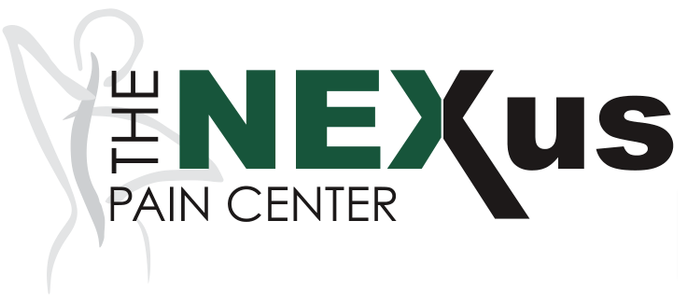Dealing with neck pain can be frustrating and disruptive, especially when it interferes with your daily routine. While severe or chronic neck pain may require professional care, there are many ways to address mild discomfort at home. The right remedies can ease your symptoms, improve your mobility, and even prevent future pain.
This guide doesn’t just list the usual advice; it introduces creative and actionable approaches to make each remedy more practical and engaging. Think of it as your personal toolkit for neck pain relief—filled with simple, innovative ways to help you feel better.
For example:
- Instead of just using a heat pad, turn your evening into a spa-like moment with a warm wrap and relaxing music.
- Tired of hunching over your screen? Set a “tech break” timer to stretch and reset your posture every 30 minutes.
Whether you’re adjusting your posture, trying gentle stretches, or making small lifestyle tweaks, these remedies are designed to fit seamlessly into your life. Let’s explore 10 effective, creative strategies to relieve neck pain and promote better neck health—all from the comfort of your home.
Quick Navigation
- Heat Therapy
- Cold Therapy
- Gentle Stretching
- Maintain Proper Posture
- Over-the-Counter Pain Relief
- Self-Massage Techniques
- Hydration and Diet
- Stress Management
- Correct Pillow and Sleeping Position
- Take Breaks and Adjust Screen Time
1. Heat Therapy
Applying heat to your neck can help relax tight muscles and improve blood flow, which aids in the healing process. Use a heating pad, warm compress, or even a warm towel for this purpose.
How to Use Heat Therapy:
- Apply heat to the affected area for 15–20 minutes at a time.
- Avoid using heat for prolonged periods to prevent burns or skin irritation.
- A warm shower can also be an excellent way to relax the neck muscles.
Creative Example: Transform your evening into a spa-like experience. While unwinding with a favorite book or calming music, place a microwavable heat wrap around your neck to create a soothing, stress-relieving moment.
2. Cold Therapy
Cold therapy is effective for reducing inflammation and numbing sharp pain, especially after an injury. Use an ice pack wrapped in a cloth or a bag of frozen vegetables for this remedy.
How to Use Cold Therapy:
- Apply cold for 10–15 minutes every few hours, particularly during the first 48 hours after discomfort begins.
- Be cautious not to place ice directly on the skin to avoid frostbite.
Creative Example: Turn a common kitchen item into relief: Freeze a damp towel and fold it inside a resealable plastic bag. Once frozen, wrap it in a soft cloth and use it for targeted cold therapy that feels just right.
3. Gentle Stretching
Stretching helps relieve tension and increase flexibility in your neck muscles. This can also prevent stiffness if done regularly.
Simple Neck Stretches to Try:
- Chin Tucks: Gently pull your chin toward your chest and hold for 5 seconds. Repeat 10 times.
- Side-to-Side Turns: Slowly turn your head from one side to the other as if looking over your shoulder.
- Side Bends: Tilt your head toward your shoulder without raising your shoulder. Hold for 5 seconds on each side.
Creative Example: Imagine starting your day with a quick “wake-up stretch” routine. As you brush your teeth, practice side-to-side neck turns or chin tucks in front of the mirror for a simple, multitasking neck relief habit.
4. Maintain Proper Posture
Poor posture is one of the leading causes of neck pain. Keeping your spine and neck aligned can relieve tension and prevent further strain.
Posture Tips:
- Sit with your back straight and shoulders relaxed. Keep your head aligned with your spine, not jutting forward.
- Use an ergonomic chair or adjust your desk setup to keep your screen at eye level.
- Avoid hunching over your phone or other devices for extended periods.
Creative Example: Set a “posture alarm” on your phone every hour. When it buzzes, take 30 seconds to roll your shoulders back, sit up straight, and align your head with your spine. It’s like hitting a reset button for your posture!
5. Over-the-Counter Pain Relief
Non-prescription medications like ibuprofen or acetaminophen can help alleviate neck pain by reducing inflammation and blocking pain signals.
When to Use OTC Medications:
- Use only as directed and for short-term relief.
- Combine with other remedies, such as stretching or ice, for better results.
Creative Example: Pair your medication routine with hydration. Place a sticky note on your water bottle reminding you to take the medication at the appropriate time, ensuring you stay hydrated and reduce inflammation simultaneously.
6. Self-Massage Techniques
Massaging the neck muscles can improve circulation and reduce tension. You can do this yourself or use tools like a foam roller or massage ball.
How to Perform a Self-Massage:
- Use your fingers to gently press and knead the sore areas of your neck.
- Roll a tennis ball against a wall, positioning it behind your neck for targeted pressure.
- Avoid massaging too hard or pressing on sensitive areas like the spine.
Creative Example: Create a DIY massage station at home. Sit in a chair with a tennis ball wedged between your neck and the backrest. Roll your body gently to mimic a professional massage experience.
7. Hydration and Diet
Dehydration can contribute to muscle stiffness and discomfort. Staying hydrated helps maintain healthy tissues and muscles.
Diet Tips for Neck Pain Relief:
- Drink plenty of water throughout the day.
- Incorporate anti-inflammatory foods such as fatty fish, leafy greens, berries, and turmeric into your meals.
- Limit processed foods and sugar, which can increase inflammation.
Creative Example: Infuse your water with fruits like lemon or berries for a refreshing anti-inflammatory boost. It’s a flavorful way to stay hydrated and combat neck pain naturally.
8. Stress Management
Stress often leads to muscle tension, especially in the neck and shoulders. Managing stress effectively can help prevent pain.
Stress-Relief Techniques:
- Practice deep breathing exercises or meditation to calm your mind.
- Engage in relaxation activities like yoga or listening to calming music.
- Schedule breaks during busy days to reset and relax.
Creative Example: Try “box breathing” during your lunch break: Inhale for 4 seconds, hold for 4 seconds, exhale for 4 seconds, and hold for another 4 seconds. This simple technique can relax your neck muscles while calming your mind.
9. Correct Pillow and Sleeping Position
Your sleeping posture and pillow play a crucial role in neck health. An unsupportive pillow can strain your neck overnight.
Sleep Tips for Neck Pain Relief:
- Use a pillow that supports the natural curve of your neck. Memory foam or cervical pillows are good options.
- Sleep on your back or side, as sleeping on your stomach can misalign the neck.
- Avoid overly high or stiff pillows that push your neck into an unnatural angle.
Creative Example: Think of your pillow as a partner in neck support. Swap your old pillow for one designed for neck health, like a memory foam pillow, and treat yourself to restful nights and pain-free mornings.
10. Take Breaks and Adjust Screen Time
Long hours at a desk or in front of a screen can exacerbate neck pain. Taking regular breaks can reduce strain.
Tips for Reducing Tech Neck:
- Every 30 minutes, take a break to stand up, stretch, and move around.
- Keep your screen at eye level to avoid tilting your head down.
- Hold devices at chest or eye level instead of looking down for long periods.
Creative Example: Use a kitchen timer or your phone’s alarm to set “tech breaks” every 30 minutes. When the timer goes off, stand up, stretch, and even do a quick neck roll. It’s a small change that makes a big difference.
Conclusion
Each of these remedies combines practical advice with creative approaches, helping you integrate them seamlessly into your daily routine. Whether it’s making small adjustments like using a supportive pillow or taking regular breaks during screen time, these strategies can significantly alleviate neck pain and improve your overall comfort.
However, it’s equally important to recognize when it’s time to seek professional help. If your neck pain persists, worsens, or significantly impacts your daily life, consulting a pain management clinic like Nexus Pain Center can provide the expert evaluation and advanced treatments needed to address underlying issues effectively.
In addition to these remedies, adopting a healthy lifestyle can play a vital role in managing and even preventing chronic pain. Activities like regular walking can alleviate lower back pain, while a diet rich in anti-inflammatory foods can support joint health and help keep conditions like arthritis at bay. Together, these at-home strategies and lifestyle choices, complemented by professional care when needed, can promote long-term pain relief and overall well-being.

